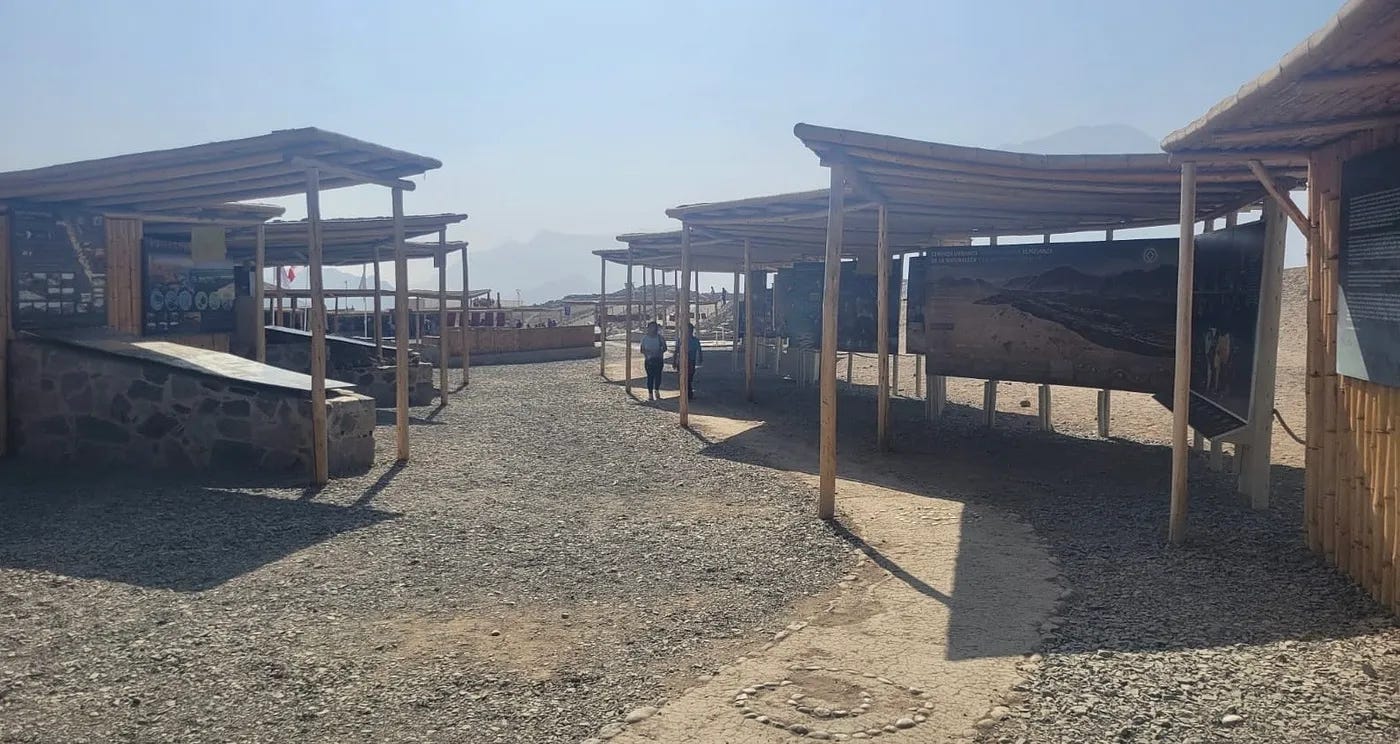Visiting the Oldest City in the Americas: Caral-Supe, Peru
The sacred city of Caral-Supe is remarkably well-preserved, and a unique out-of-the-way tourist destination
The Sacred City of Caral-Supe, also known simply as Caral, isn’t a major tourist attraction in Peru. It’s remote, minimally developed with tourism infrastructure, and doesn’t offer the sort of “fun and photos” visitor experience that travelers flock to. That said, it’s a special place. The lack of crowds, the minimalist presentation of the ruins, and the challenges in reaching the destination all make the visit more rewarding.
The name Caral-Supe is used for the pre-Colombian society that lived in what’s now known as the Caral region of coastal Peru, north of Lima, in the Supe Valley. Caral-Supe is the name used for the people, their ancient city, and the archaeological site they left behind.
The Caral-Supe archaeological site is a remarkably well-preserved set of structures that includes ancient temples and dwellings. The site contains some of the world’s earliest pyramids and is considered the oldest city in the Americas. Very few sites in the world contain such a grand array of ruins from such an early era.
Getting to Caral-Supe on public transit is tricky, which is partly why the site doesn’t receive a heavy flow of visitors.
My partner and I went in our own car. To reach the site from Lima, we drove north into the desert for three hours, then headed down a long dirt road (around one more hour of driving) through small farms. The drive includes bouncing over a rocky, mostly dry river bed. In the rainy season, vehicles can’t access the site.
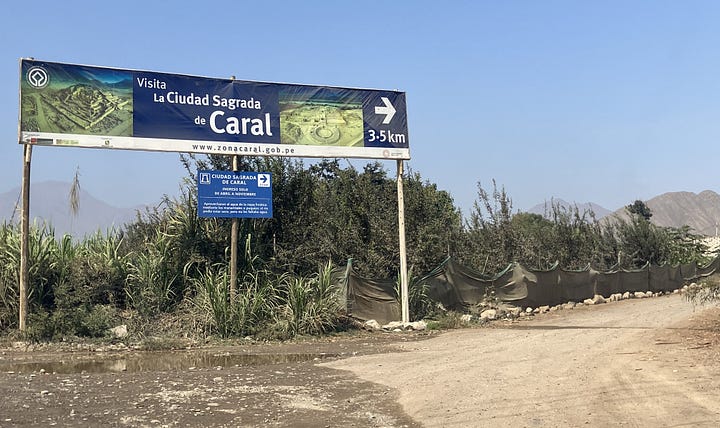
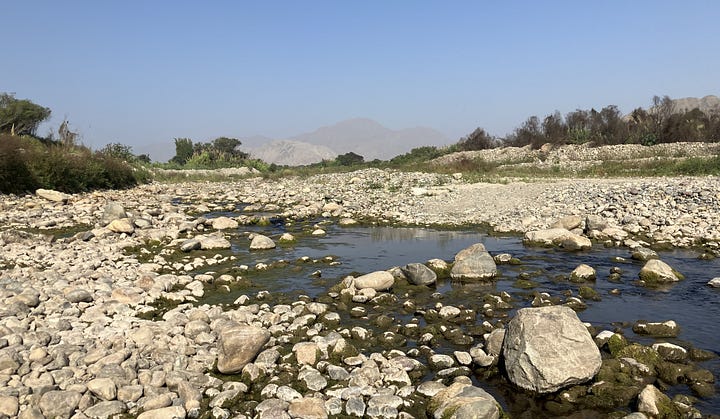
Arriving at the ruins, we parked in a large sandy lot alongside a few other cars and school field trip buses. The visitor center, where we waited for the next tour to start, is an unobtrusive compound built with local materials. It blends in elegantly with the desert surroundings.
Our guide led us around the ruins, which consist of a number of stone structures encircling a large open area. The city had temples and separate housing areas for different social classes. It struck me how similar the layout is to a traditional city center in Peru (and elsewhere) in which a church and other important buildings surround a plaza.
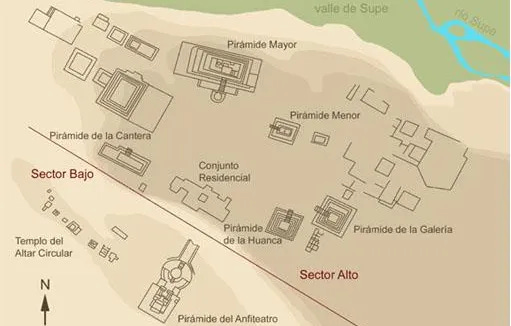
The ruins are incredibly well-preserved and minimally disturbed. Original, undamaged stonework is visible throughout the site.
No new structures have been added to the site. Therefore, there are no elevated lookout points, which makes it tough to take a decent photo.
Photos fail to capture the panorama of the site. Even the in-person visual experience is very 2D compared to the grandeur that an aerial view reveals. Drone photography is not allowed, but some aerial photos exist, apparently from official photo shoots that occurred years ago.
Here’s a shot from the Peruvian Tourism Ministry website:
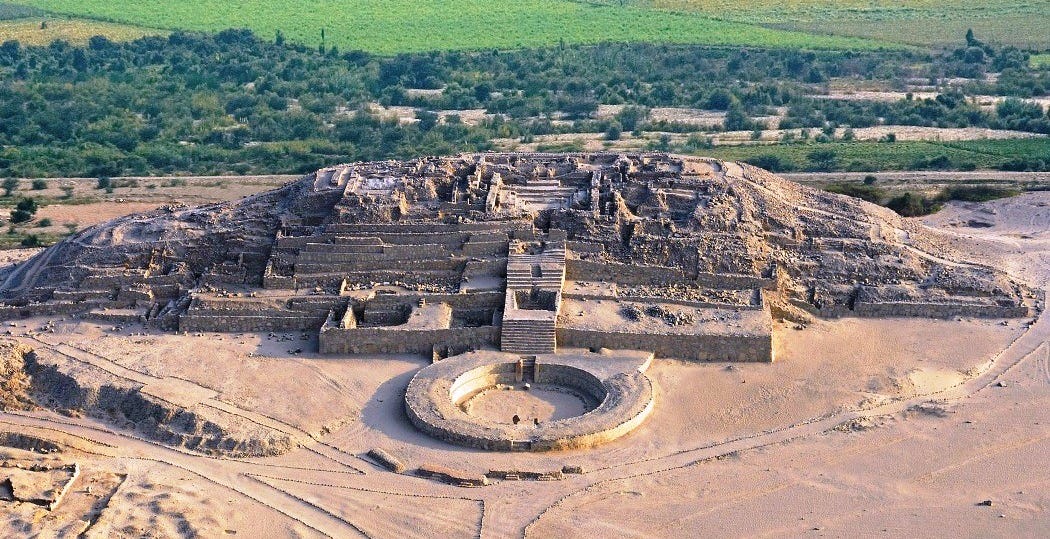
Making do at ground level, my favorite photos were of a monolith that may have been put in place for calendar-keeping and astrological purposes. Its peak mimics the surrounding geography.
These two photos show opposite sides of the monolith, with its tip forming a nearly perfect imitation of the mountains beyond — from both angles.
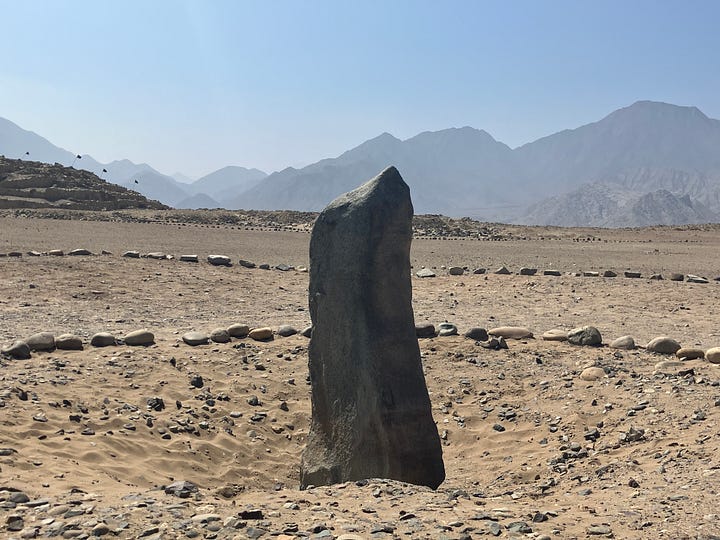
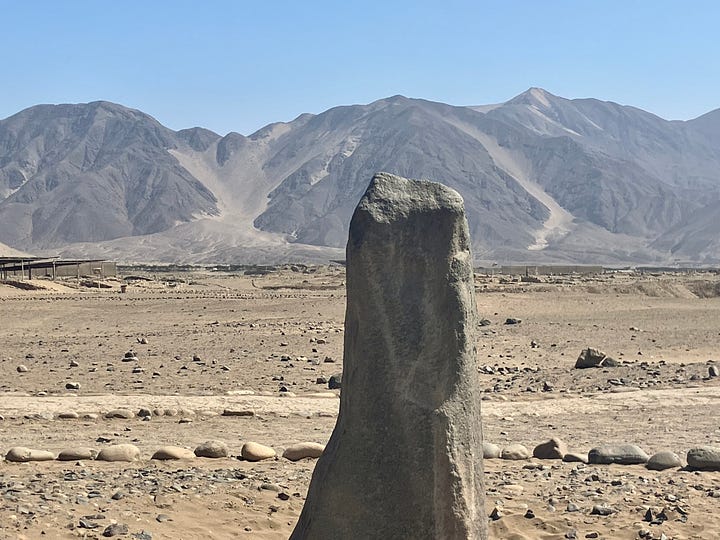
I also had to sneak a shot of this youngster. While the guide lectured and the adults snapped photos, this lil’ dude did what comes naturally… he started organizing rocks into piles. Just like the… well, yeah, you get it.
Our guide told us that visitors used to be able to climb atop the ruins and there were plans to reconstruct damaged areas to form more complete structures. When the site was approved as a UNESCO World Heritage Site in 2009, the Peruvian authorities agreed to cease alterations and reduce visitor access.
It’s tough to take a satisfying photo of Caral-Supe, but that’s okay. Not every special place is meant to be an Instagram sensation.
Visiting Caral
Hours: Caral is open from 9 am to 4 pm, Monday—Sunday. Be sure to arrive before 2:00 pm.
Cost: The price of admission is S./11 and guided tours cost S./20 per person.
For official visitor info from the Peruvian Ministry of Culture, click here for general info and here for directions to the site and public transit options.




